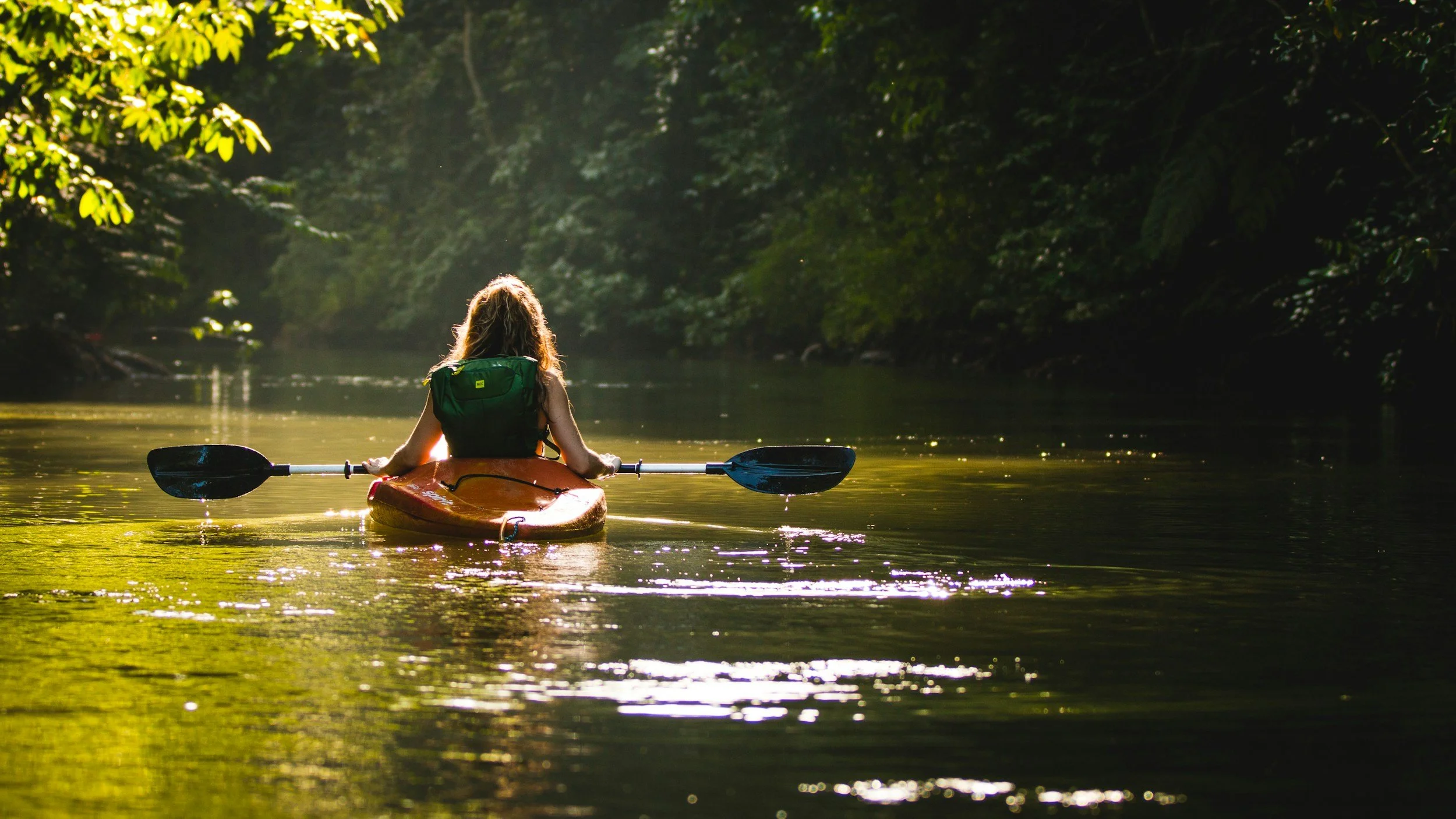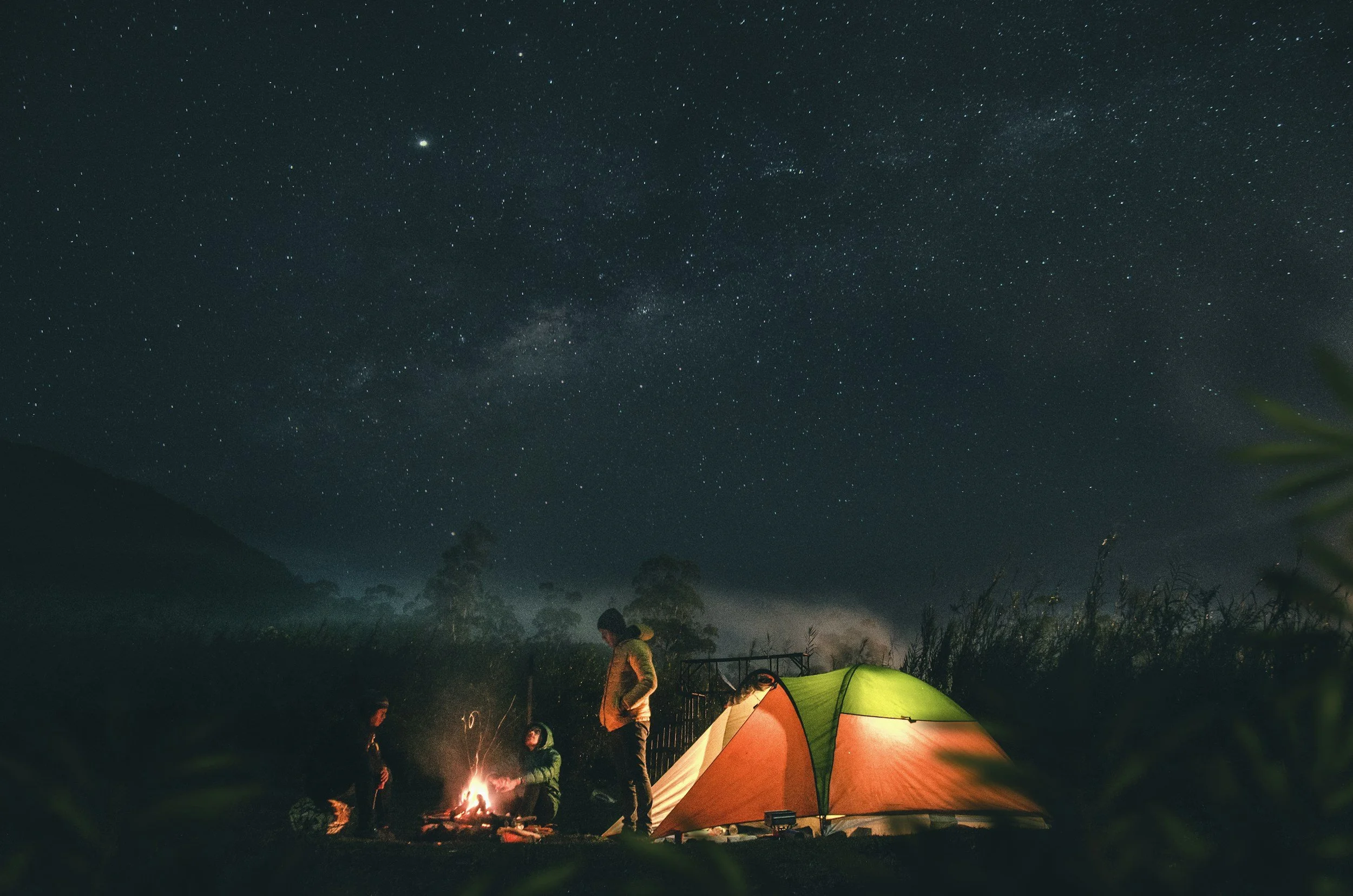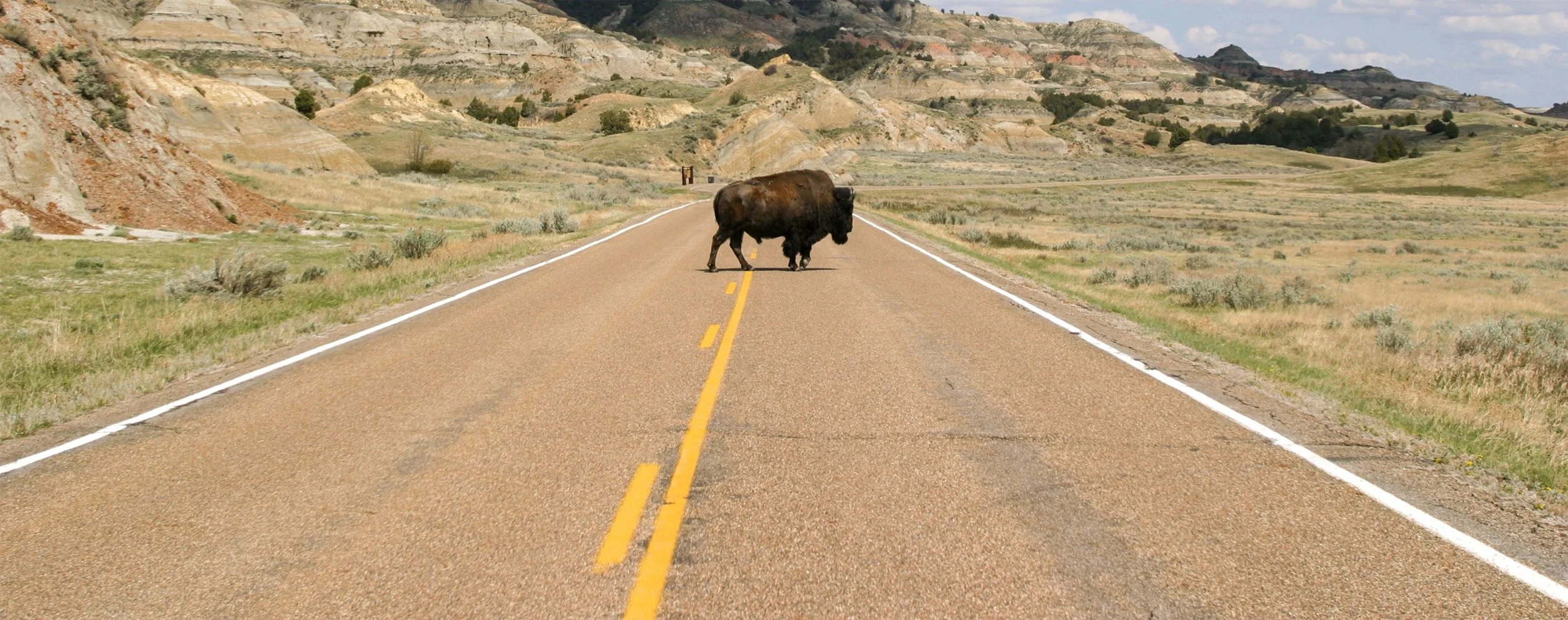The Ultimate Guide to Visiting U.S. National Parks (No Matter the Season)
*Some of the links in this post are affiliate links, meaning I may earn a commission if you book or buy through them. For more information, check out our full disclosure page.
There’s something almost sacred about stepping into a U.S. National Park—where time slows down, the air feels fresher, and the grandeur of creation reminds us just how vast and beautiful the world can be. These are places that stir something deep in us, offering space to reflect, explore, and reconnect—whether it's with nature, with loved ones, or with ourselves.
I’ve always found a certain kind of peace in these wild spaces—the kind that only comes from winding trails, open skies, and moments of quiet wonder you can’t quite explain. There’s just something about them that keeps calling me back.
With over 400 national park sites across the U.S., there’s a landscape for every season, every traveler, and every soul seeking a little wonder—towering peaks, quiet deserts, lush forests, and rugged coastlines all waiting to be discovered.
Whether you're planning a spring break hike, a solo summer escape, or a peaceful winter road trip, this guide will help you choose the right park, prepare wisely, and make the most of your adventure—no matter when you go.
Choosing the Right Park for the Season
Spring
Wildflowers bloom, waterfalls rush, and crisp air makes it the perfect time to stretch your legs after winter’s hibernation. Spring in the parks is a time of awakening—for nature and for us.
Great Smoky Mountains (TN/NC) – Often called the “Wildflower National Park,” the Smokies burst into color with over 1,500 species of blooming plants. Add in fog-draped mountains, rushing creeks, and accessible trails, and it’s spring at its most scenic.
Zion National Park (UT) – Before summer crowds arrive, Zion offers perfect hiking temps, blooming cactus flowers, and flowing canyons. Take on Angels Landing or wander the quieter trails under sunny skies and cool desert breezes.
Joshua Tree (CA) – Spring transforms this desert into a surreal dreamscape—wildflowers peek between boulders, and the namesake trees stretch like sculptures against a watercolor sky. It's warm, but not yet scorching, and ideal for stargazing.
Summer
Long days, alpine trails, and epic views define summer in the parks. While some places heat up, high elevations and northern latitudes come alive.
Glacier National Park (MT) – This is when Glacier truly shines. Going-to-the-Sun Road opens, alpine lakes thaw, and wildflowers dot high-elevation trails. Wildlife sightings are common, and the long summer light makes it hard to leave.
Yosemite (CA) – The waterfalls roar with snowmelt, meadows bloom beneath towering granite cliffs, and the iconic Valley views are as inspiring as ever. Arrive early or visit midweek for quieter moments in this bucket-list park.
Acadia (ME) – Where the forest meets the sea. Acadia’s coastal cliffs, carriage roads, and mountain trails are at their best in summer, cooled by ocean breezes and framed by evergreens. Sunrise at Cadillac Mountain is worth the early wake-up.
Fall
Golden light, fiery foliage, and fewer crowds make autumn one of the most underrated seasons to visit the national parks. It’s a time of transition—and reflection.
Shenandoah (VA) – Skyline Drive winds through a canvas of reds, oranges, and golds. Cooler temperatures and quiet overlooks make it easy to take it slow and soak it all in.
Grand Teton (WY) – Aspens shimmer gold beneath snow-dusted peaks. Wildlife is active, trails are crisp, and the Tetons look like something out of a postcard. It’s chilly, but worth every layered step.
Rocky Mountain National Park (CO) – Fall here means elk bugling in the distance and sweeping alpine vistas dotted with autumn hues. It’s less crowded than summer, but equally stunning—especially in the golden hours of morning and evening.
Winter
Snow blankets some parks while others offer peaceful desert solitude. Winter in the parks is for those who don’t mind bundling up—or those chasing sunshine with a quiet view.
Bryce Canyon (UT) – Those famous red rock hoodoos covered in snow? Unreal. Bryce becomes a quiet winter wonderland, with snow-dusted formations, frozen pine forests, and crisp blue skies.
Big Bend (TX) – Winter is desert season. With cool hiking weather, star-studded skies, and vast solitude, Big Bend is ideal for those wanting space, warmth, and silence.
Everglades (FL) – The dry season brings mild temps, fewer bugs, and ideal wildlife viewing. Glide through mangroves by kayak, spot alligators and wading birds, and soak up the subtropical stillness without the summer humidity.
National Park Passes & Fees
Exploring national parks doesn’t have to be expensive—and there are plenty of ways to make the most of your visit without overspending.
America the Beautiful Pass – $80/year
This annual pass covers entrance fees to over 2,000 federal recreation sites across the U.S., including all 63 national parks, national forests, wildlife refuges, and more.
If you’re planning to visit even three or more parks in a year, this pass pays for itself. It covers one vehicle and up to four adults (kids under 16 are always free). It’s a must-have for frequent explorers or anyone planning a big road trip.
Free Entrance Days
Several times each year, the National Park Service waives entrance fees for everyone. These are great opportunities to visit parks you’ve had your eye on—without spending a dime.
Notable free days include:
Martin Luther King Jr. Day (January)
First Day of National Park Week (April)
Great American Outdoors Day (August)
National Public Lands Day (September)
Veterans Day (November)
Tip: These days can be busy, so arrive early or explore lesser-known parks.
Discounted & Free Passes
There are several special passes designed to make the parks more accessible:
Senior Pass – $20/year or $80 lifetime for U.S. citizens age 62+. It also includes discounts on amenities like camping and tours.
Military Pass – Free annual pass for current U.S. military members and their dependents, plus veterans and Gold Star families.
4th Grade Pass – Every 4th grader in the U.S. can get a free annual pass for their family through the Every Kid Outdoors program.
Access Pass – Free lifetime pass for U.S. citizens with permanent disabilities. It also includes discounts on services.
Tip for Travelers: You can buy passes online through nps.gov or at the entrance stations of most national parks.
Best Ways to Explore
Whether you're chasing mountaintop views or just want to soak up nature at a slower pace, there’s no one-size-fits-all way to experience a national park. The best part? You can make your adventure your own.
Hiking & Walking
From short, scenic strolls to full-on backcountry treks, national parks offer trails for every fitness and comfort level. You’ll find paved, accessible walkways to iconic views, as well as lesser-known hikes that lead to quiet corners and hidden waterfalls. Check park maps or ranger stations for current conditions and trail suggestions based on your goals.Biking
Parks like Zion and Acadia are especially bike-friendly, with dedicated paths and shuttle systems that let you explore without the traffic. You can often rent bikes nearby, or bring your own if you’ve got space in the car (or on the camper!). It’s a fun, low-impact way to cover more ground without missing the details.Kayaking & Canoeing
Some parks shine best from the water. Try Everglades for mangrove tunnels and manatee sightings, Glacier Bay in Alaska for epic coastal wilderness, or Voyageurs National Park in Minnesota, where much of the park is accessible only by boat. Outfitters and guided tours are available for beginners—no experience needed.Accessible Options
Many national parks are working to make nature more inclusive. You’ll find ADA-compliant trails, scenic overlooks with parking nearby, accessible campgrounds and restrooms, and ranger-led programs designed for all ability levels. Shuttle systems in parks like Zion and Yosemite make it easier to reach major sights without needing to hike in.Traveling Solo, as a Family, or with a Group?
No matter your travel style, national parks have something for you. Going solo? Embrace the stillness and freedom of setting your own pace. With kids? Junior Ranger programs and interactive visitor centers keep little ones engaged. On a road trip? Map out a few parks along your route to break up the drive with epic stops.
Lodging & Camping Tips
Where you stay can shape your park experience just as much as where you go. Whether you love campfire coffee or prefer a soft bed and hot shower, there’s a way to stay that fits your vibe.
Campgrounds
If you’re planning to camp, reserve early—Recreation.gov is your go-to for most national park sites. Some campgrounds book up months in advance, especially for peak summer dates or top-tier parks like Yellowstone or Yosemite. Look for options with shade, nearby trailheads, and amenities that match your setup.Cabins & Lodges
Many parks offer historic lodges or rustic cabins right in the heart of the scenery. They book quickly but are a fantastic way to experience the park without pitching a tent. Think rocking chairs on a porch with a view, early morning trail access, and a little extra comfort after a long day outside.Nearby Towns
Can’t find a spot inside the park? Nearby gateway towns often offer plenty of charm—and more dining options. Try Springdale for Zion, Bar Harbor for Acadia, or Tusayan for Grand Canyon. Bonus: some towns have shuttles into the park, so you can skip the parking stress.Off-Season Advantage
Fall and winter visits come with quieter trails, lower prices, and a totally different feel. Lodging tends to be easier to book, and you'll often get to enjoy dramatic skies, snow-dusted trails, and sunsets that stop you in your tracks. Just pack layers and check for seasonal road closures or reduced services.
Gear & Packing Must-Haves
A national park trip doesn’t require a full gear closet—but there are a few essentials that can make or break your day out on the trail.
Water Bottle or Hydration Pack
Staying hydrated is non-negotiable—especially at higher elevations where you can dehydrate faster than you realize. A reusable water bottle is great, but for longer hikes, a hydration bladder or pack makes it easy to sip as you go.Layers, Layers, Layers
Weather can shift fast in parks, especially in the mountains or desert. Mornings might start in the 40s and afternoons hit the 80s. Pack light, breathable layers you can add or shed—think moisture-wicking base layers, a fleece, and a rain jacket just in case.Comfortable Walking Shoes or Hiking Boots
Even if you’re not summiting a mountain, national parks involve a lot of walking. Trails can be rocky, steep, or uneven, and cobblestone streets in some historic areas aren’t much easier. Supportive footwear is worth it—your feet (and back) will thank you.Map & Compass (or Offline Maps)
Cell signal drops quickly once you’re away from main roads. Download offline maps through apps like AllTrails, Gaia, or Google Maps before you head out—or go old-school and bring a paper map and compass. Don’t rely solely on GPS.Sun Protection
Even on cloudy days, UV rays are strong at higher elevations. Pack sunscreen, sunglasses, and a hat with a brim. A lightweight long sleeve shirt can help protect your skin, too.Headlamp or Flashlight
If you’re starting early or staying out late (sunsets are worth it!), don’t forget a light source. Trails get dark fast, and it’s easy to underestimate how long a hike might take. A headlamp keeps your hands free—especially handy if you're also snapping photos or holding trekking poles.Leave No Trace Essentials
Bring a small bag for trash, a trowel if you’re in the backcountry, and always pack out what you pack in. Stick to marked trails to protect fragile ecosystems, and leave things as you found them—yes, even that perfectly heart-shaped rock.
Safety & Respect
Exploring national parks is an adventure—but with that freedom comes responsibility. Here’s how to stay safe, tread lightly, and be a good steward of the places you visit.
Wildlife Awareness
National parks are not zoos. Wild animals may look calm, but they’re unpredictable and can be dangerous. Keep your distance (at least 25 yards from most animals and 100 yards from bears or wolves), never feed wildlife, and secure your food when camping. A zoom lens or binoculars is your best friend.Trail Etiquette
Uphill hikers have the right of way. If you stop for a break, step off the trail. Keep pets leashed and don’t blast music—let nature speak for itself. If you’re hiking solo, it’s okay to play a little music or make noise for safety—but headphones in both ears on a remote trail? Not recommended.Watch the Weather
Check the forecast before you go—and again once you arrive. Mountain storms can form quickly, and flash floods are a real risk in desert canyons. Always let someone know your plans if you're heading off-grid, and have a backup plan if conditions turn.Cultural Sensitivity
Many parks are on Indigenous lands, and the natural beauty you see often carries deep spiritual and cultural significance. Take time to learn about the tribes connected to the land—many parks share this history through signage or visitor center exhibits. Respect sacred sites, and if you’re unsure, ask a ranger.Final Thought
Enjoy the wonder—but remember that your footsteps leave a mark. A little preparation and a lot of respect go a long way toward preserving these wild, beautiful places for the next traveler… and the next generation.
Final Thoughts
Visiting a national park isn’t just about checking off a bucket list—it’s about opening your eyes to something greater. It’s about wonder. Stillness. Awe.
Whether you’re gazing over the rim of the Grand Canyon, watching bison roam across the valleys of Yellowstone, or standing in the quiet glow of a Haleakalā sunrise, these places have a way of shifting your perspective. They invite you to slow down, breathe deep, and truly see the world around you.
It’s more than stunning landscapes—it’s the way the light filters through the trees, the hush that settles on a snowy trail, the conversations that happen around a campfire. National parks reconnect us with the rhythms of creation. They help us tune out the noise and remember what really matters.
In these wild, sacred spaces, you may find yourself seeing not just the beauty of the earth—but a deeper sense of peace within.
What park is next on your list?
Drop a comment and let me know your dream national park destination—or your favorite one so far!
Travel Well,










